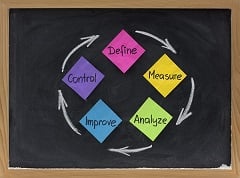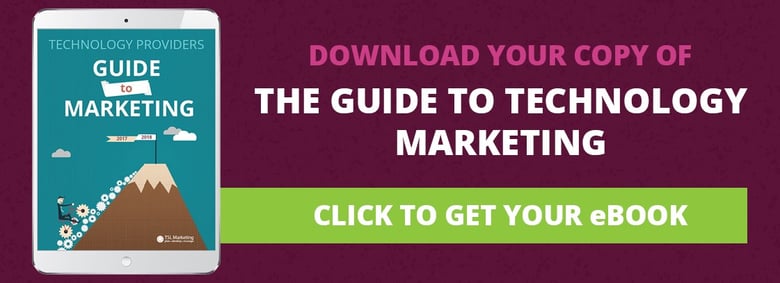Agile Marketing: What It Is and How to Implement It
October 13, 2017

It seems that everyone is talking about agile these days. But do people really understand what it is?
Traditional Development
Agile marketing has risen from the success of agile software development. Traditional application development was very expensive and was time-consuming from idea to deployment of applications. It basically followed these steps:
- Business unit manager identifies a need for an application.
- Business analysts meet with key users, stake holders, and technical teams.
- Designers and developers meet with the business analyst and project managers to create the development plan.
- Developers build out the application as completely as possible.
- Rigorous testing and quality control to eliminate bugs.
- Create training programs.
- Roll out the application in stages to different levels of users.
- Train users on all elements of the application.
This could be a 12 to 18-month process. In today’s fast-changing business environment, that is simply too slow to take advantage of new opportunities. Those opportunities may have changed or gone away completely, which could change the requirements of the application before it is even released.
Any updates or feature requests are prioritized and entered into a production cycle that could take another 12 to 24 months.

How Agile and Agile Marketing Are Different
Agile addresses this by getting the minimal viable product into production as quickly as possible and then tweaking it, making changes based on data modeling and requirements. It is a process of continuous development.
And this process works perfectly for marketing situations where data is available from multiple sources or when market conditions can shift quickly. Often a lot of what we create is based on assumptions. It is difficult to create a rigid marketing plan that doesn’t change for a year or more.
How to Apply Agile to Marketing
We make a lot of assumptions as marketers. Those assumptions need to be constantly tested and confirmed. Many times, changes will need to be made. The key to adopting an agile approach to marketing is the team that you build around it.
Agile marketing should be able to move quickly. The team that you build needs to remain small but contain the critical resources. Your team will identify potential opportunities, test those opportunities, and refine the approach to maximize success. These require different skill sets and areas of expertise depending on tactics that you want to conduct.
At TSL Marketing, a lot of our marketing effort is centered around content marketing for technology companies. We build out pieces of content that we amplify on multiple channels, including:
- Paid social
- Paid search
- Organic social
- Organic search
- Web properties
- And others
Our team includes experts in SEO, UX design, copywriting, analytics, and project management. Being agile is not about skipping steps; it’s about acting and quickly making changes based on real data to maximize the opportunity.
A team leader, usually the PM, should be designated to help set priorities, manage resources and tasks, coordinate team communication, and report on findings and results. The communication is critical so that everyone learns from the efforts, and best practices are repeated on future campaigns.

Technology Enables the Agile Marketing Team
The critical component of agile marketing is the ability to act quickly on real time data. This data can come from multiple sources but should be synched into a single tool or dashboard. A content management platform is critical if you intend to do content marketing.
You will need to track results quickly and run A/B tests on copy, design, publish time, and any other variables that can affect the success of your marketing.
Set Direction and Guidelines
 Begin with a kick-off meeting for your agile marketing team. This is where you define goals and objectives. It sets the tone for how communication and collaboration between the team will work. Agile marketing works when your team makes assumptions and then tests those assumptions using real data.
Begin with a kick-off meeting for your agile marketing team. This is where you define goals and objectives. It sets the tone for how communication and collaboration between the team will work. Agile marketing works when your team makes assumptions and then tests those assumptions using real data.
Begin with Targeted Analytics
Your team should start by using targeted data based on your market to understand your customers’ and prospects’ buyer journey. You want to identify pain points or challenges that customers encounter along that journey to find opportunities to assist them.
Make some assumptions on how your team can improve engagement and reduce pain points that your customers experience. List these assumptions and offer ideas on what can be done to help. Prioritize the ideas in the order that you want to test them.

Test, Iterate, Test Again
 You may feel that a different call to action (CTA) added to your blog will increase subscriber rates. Or that promoting a piece of content through paid LinkedIn ads will generate new views. Go ahead and test those assumptions and track the data closely. Test different ad words to see if they increase click rates.
You may feel that a different call to action (CTA) added to your blog will increase subscriber rates. Or that promoting a piece of content through paid LinkedIn ads will generate new views. Go ahead and test those assumptions and track the data closely. Test different ad words to see if they increase click rates.
Communicating throughout the process is critical. This does not mean that you need to set up daily meetings, because you want to spend more time doing and operating efficiently. But you do need a way to share what each team member is doing and the results that they are seeing.
Agile Marketing Starts Small and Then Expands
Agile marketing is about testing assumptions and adjusting for continuous improvements. It requires a lot of collaboration, especially when you are just starting out. It makes sense to start small on specific projects.
This gives you the opportunity to generate your unique requirements within your organization and the tactics that you employ. Then you can begin to expand to include more agile teams built on real-world experience. Just like most efforts, there is not a single way to accomplish agile marketing and it should be tested to continue to evolve over time.
That evolution will be based on real time data, as your organization will gradually be completely data-focused to make decisions and develop assumptions.
We wish you the best of luck as you begin or continue your journey into agile marketing.
If you are a technology marketer, we have created this guide just for you.
